Written by: Bitpush News
The GENIUS Act passed, signed by Trump, marking the formal birth of the first stablecoin regulatory framework in US history. The crypto market cheers, but if you think this is just good news for USDC and USDT, you underestimate its profound significance. The true protagonist is Ethereum. It is quietly transforming into 'the global settlement network for on-chain US dollars', and ETH is being revalued as the settlement fuel for future finance. A structural bull market thus begins.
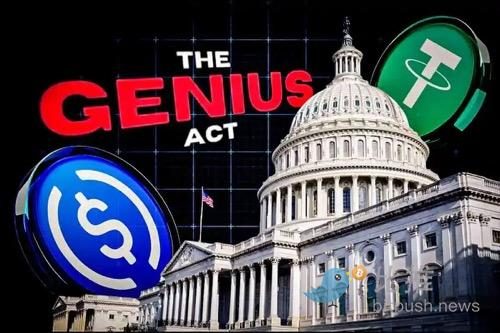
1. The evolution of the US dollar stablecoin: from shadow currency to state machinery
1.1 Starting point: A shadow system 'born' from Bitfinex.
Stablecoins are not a new thing. After the 2008 financial crisis, the 'liquidity sovereignty' of the US dollar on a global scale was infinitely magnified. The first stablecoin in the crypto industry—USDT, was launched by Bitfinex's associated company Tether in 2014.
Its original intention is simple and direct:
'Let you have US dollars in the crypto world.'
It has no central bank backing, nor auditing mechanism. It merely states, 'I have US dollars in my account, so I dare to issue tokens pegged 1:1.' USDT began to circulate but was never accepted by regulators.
But the market loves it. It solves a key problem—between high-volatility assets like Bitcoin and Ethereum, users need a 'safe haven', an asset that can maintain stable pricing and temporarily store value.
As a result, the use of stablecoins is rapidly growing. Its market value has surged from $2 billion in 2018 to over $160 billion in 2025, with on-chain US dollar trading volume even surpassing Visa's cross-border settlement volume at one point in 2022.
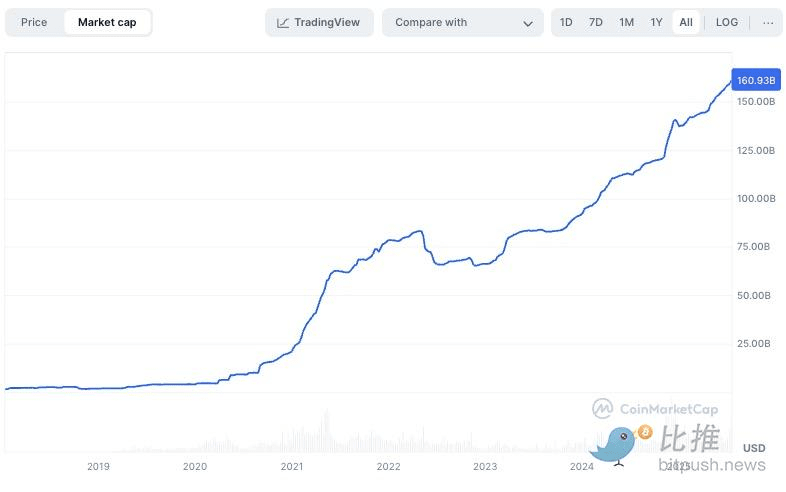
1.2 The Libra Incident: The Awakening of the Federal Reserve
In 2019, Facebook launched Libra (later renamed Diem), aiming to build a global stablecoin system anchored in a basket of currencies.
'Global users pay with Libra, bypassing SWIFT, banks, and even US dollars.'
This terrifies the Federal Reserve: If a tech platform can control the global circulation of US dollars, what do we need central banks for?
The US Congress urgently halted Libra and began to think—We need a regulated stablecoin system that we can control.
1.3 The Birth of the Act: GENIUS, allowing stablecoins to enter the 'system'.
In 2025, the (GENIUS Act) was passed by a high vote in Congress. The core contents are as follows:
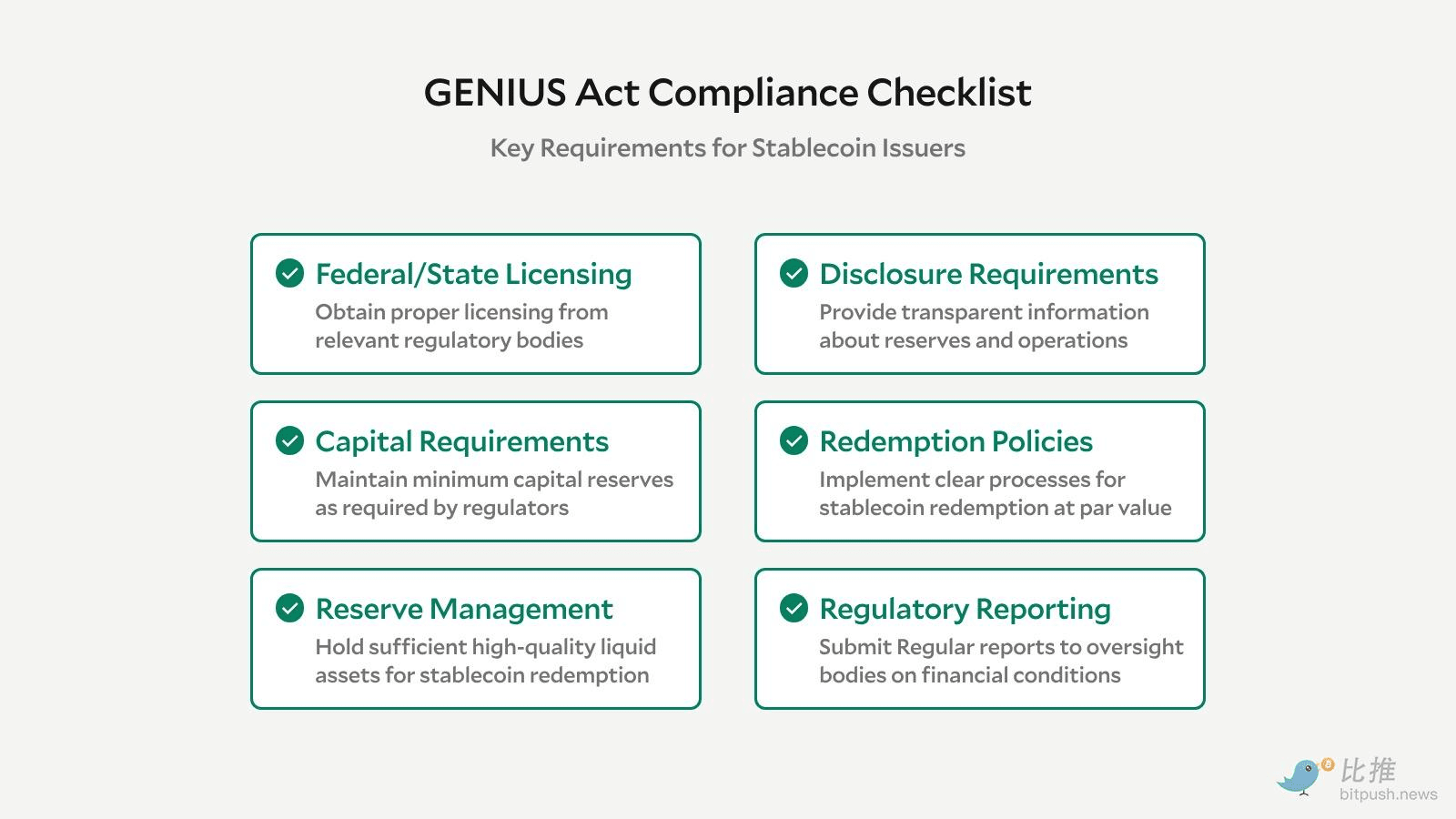
Stablecoins must be 100% backed by US Treasury bonds or cash;
Issuers must obtain federal or state-level licenses;
Prohibition of interest payments, eliminating shadow banking;
After a three-year transition period, illegal issuance of stablecoins will be prohibited;
Overseas issuers must register, file, and be regulated, or they cannot serve US users.
This is not a regulatory 'shutdown', but a formal 'national takeover'.
It legalized US dollar stablecoins and incorporated them into the US financial infrastructure.
2. Ethereum: The 'engine' and 'foundation' of on-chain US dollars.
2.1 Where are stablecoins running on which chain?
As of July 18, 2025:
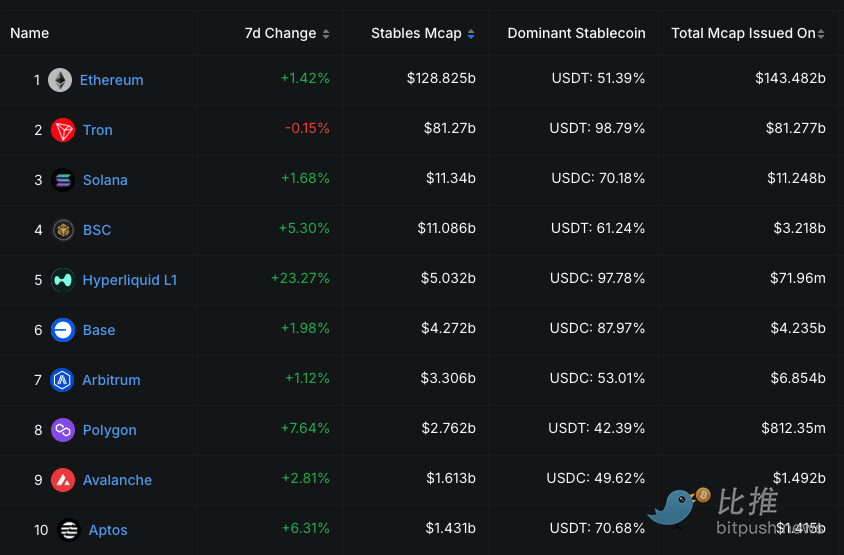
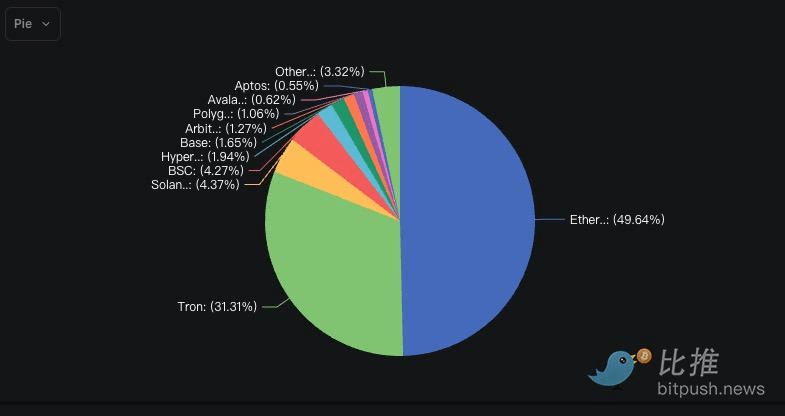
Image source: defillama
It can be seen that:
The main battlefield for stablecoins is on Ethereum, with a share of 49.61%, primarily used for DeFi, payments, and settlements.
Although Tron has a lot of USDT, it is mostly internal off-chain transfers in Asian CEX, rarely entering the real economy.
And on Ethereum:
With USDC settlements via Visa/Stripe/PayPal;
With DAI collateralized and interest-bearing from MakerDAO;
With RWA collateral systems being promoted by PayPal and BlackRock.
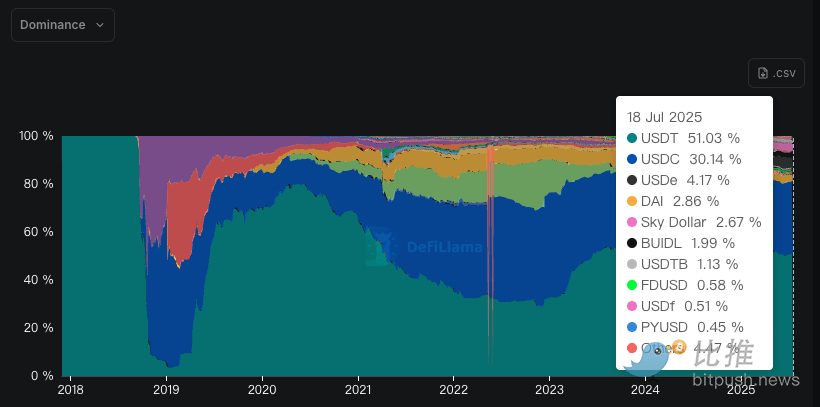
Ethereum is 'the territory of US dollars on-chain'; USDT/USDC are just its surface. Deeper than that is the birth of an on-chain US dollar economy.
3. 'US Dollar Engine': Re-evaluating ETH's Role
3.1 Every transaction of on-chain US dollars will consume ETH.
Ethereum's core source of income is:
Gas fees (ETH burning)
MEV (Maximum Extractable Value)
Staking yield
And stablecoins happen to:
High-frequency use (transfers, settlements, DeFi)
Easy integration (API-based)
Low threshold to attract C-end and institutional users
Stablecoin = Ethereum's killer 'fuel consumer'.
As of the first half of 2025, stablecoin trading volume on Ethereum accounts for 61%; ETH burned due to stablecoin-related contracts accounts for 48.2% of the total; daily ETH destruction peaks at over 3,500 ETH, approximately 12 million USD.
The more stablecoins are legally used, the scarcer ETH becomes.
3.2 ETH = Digital settlement gold? Valuation model upgrade
Traditional ETH valuation comes from 'on-chain usage × market sentiment'. But after the legalization of stablecoins, the ETH valuation model should be upgraded to:
ETH public chain value = On-chain economic activity (stablecoins × RWA × payments) × Gas destruction amount × staking security × on-chain TVL multiple
The more economic activities → the faster ETH burns → the stronger deflation.
The larger the TVL → the higher the demand for ETH collateral/staking → the tighter the circulation.
The more users → the more stable the returns → ETH resembles a financial benchmark asset.
From 'speculative asset' to 'settlement layer token', ETH's value will move towards long-term stability + deflation model.
4. RWA synergy: On-chain US dollars drive real-world assets on-chain.
4.1 What are RWA?
RWA (Real-World Assets), that is, 'real-world assets on-chain':
Government bonds, corporate bonds
Accounts receivable, rights of ownership
Shares in stock funds
Even real estate shares
If these assets can be bought and sold with 'on-chain US dollars', it requires a three-in-one system of stablecoins + smart contracts + clearing networks.
Ethereum is the base of this triangle.
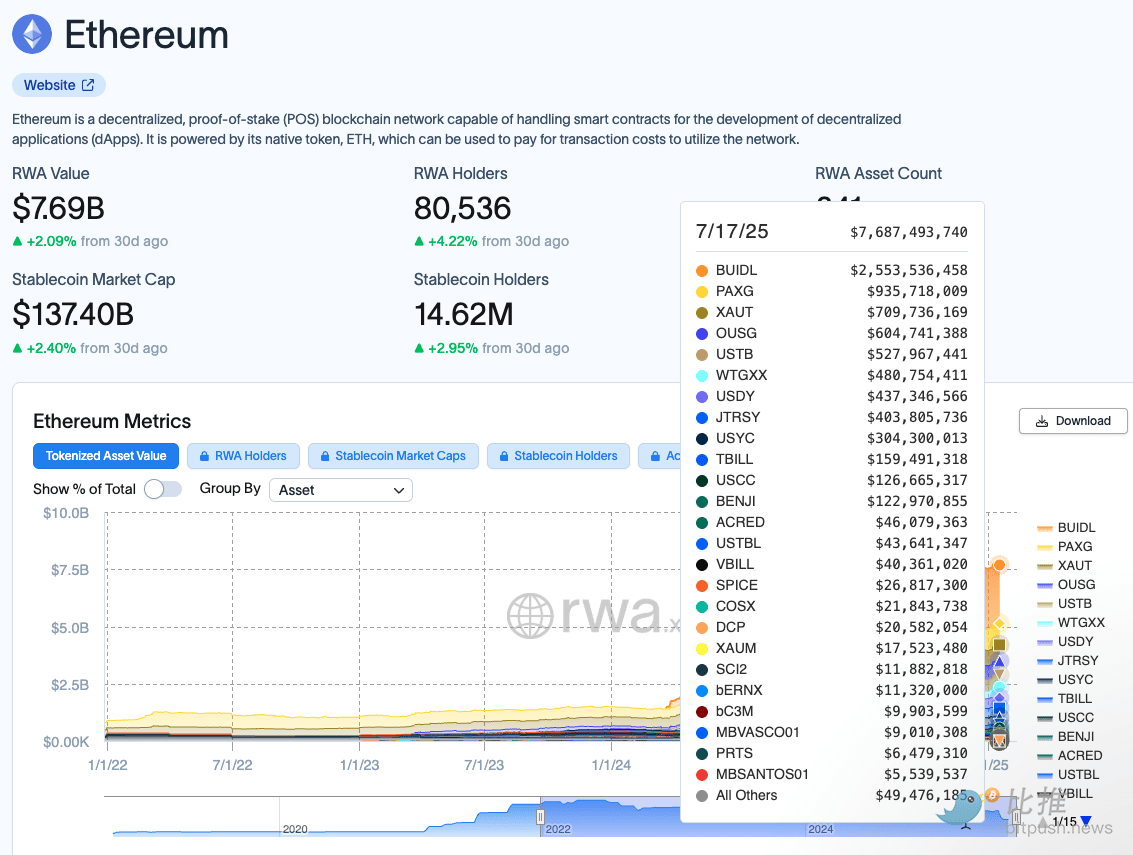
4.2 The experiment has begun: BlackRock and Franklin have gone on-chain
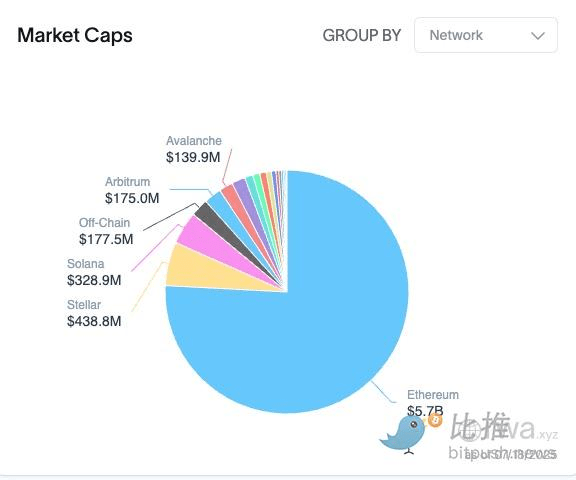
BlackRock's BUIDL fund holds short-term US Treasury bonds, allowing redemption with USDC;
Franklin Templeton issues the FOBXX fund, supporting Ethereum settlement;
On-chain T-Bill custody scale breaks $7.5 billion, over 70% based on Ethereum or its L2.
What does this mean?
US dollar → On-chain stablecoin → Purchase US Treasury RWA → Gain returns → Continue to flow back on-chain.
Ethereum has become a 'digital version of the Federal Reserve system': on-chain minting + on-chain treasury bond market + on-chain clearinghouse.
ETH, as a fuel coin, will directly participate in these financial processes:
Providing Gas support;
Pledged as a validation node;
As a settlement asset for RWA transactions;
ETH is becoming the 'credit coal mine' of the financial system.
5. Future trends: Institutions, nations, and regulations encircle
5.1 Institutions are buying, nations are watching, regulators are giving the green light
BlackRock and Fidelity are deploying RWA and stablecoin funds;
Visa and Stripe are building a stablecoin settlement network;
Circle is applying for a national trust license;
Hong Kong dollar stablecoins and Korean won stablecoins have begun pilot programs;
The European Central Bank and the Bank of Japan are studying a 'regulatory compliant stablecoin framework';
Stablecoins are no longer 'Crypto', but the next step in global finance.
5.2 Potential risks: Five major challenges Ethereum may face.
Risk points may affect L2 drainage of ETH revenue. More transactions may flow to Arbitrum, Base, and other L2s, diluting ETH main chain income. Policy reversal: once financial giants lose control, stablecoins will be tightened again. Cross-chain challenges: Tron and Solana may squeeze ETH in local scenarios (such as payments, games). Black swan events: on-chain US dollar hacks or large-scale decoupling could undermine the foundation of trust. Centralized staking: the trend of centralized staking (Lido's proportion is too high) may affect network neutrality.
Therefore, while Ethereum leads in the 'battle for on-chain US dollars', victory is by no means guaranteed.
6. Conclusion: It is not that Crypto wants US dollars, but that US dollars are coming to Crypto.
The GENIUS Act is a signal: 'On-chain US dollars are part of America's strategy.'
Ethereum is the 'execution layer' of this strategy. And ETH is the 'internal fuel' of this engine.
We are entering a new financial era:
Not BTC against fiat, but ETH becoming a fiat network;
Not on-chain against off-chain, but on-chain absorbing off-chain;
Not Crypto challenging the US dollar, but the US dollar invading Crypto, transforming into digital form.
ETH is not the next BTC; it is the next Swift + clearinghouse + Federal Reserve benchmark.




